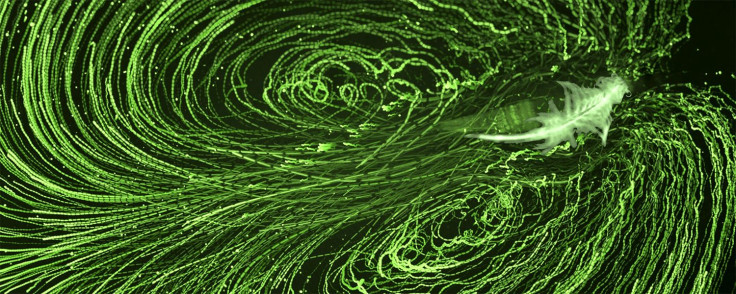These Tiny Sea Dwellers Are Exceptionally Good At Mixing Ocean Waters: Study

A new study exploring shrimp and krill, a few centimeter long invertebrates with feathered legs, suggests these tiny sea dwellers can stir ocean waters rapidly fast when in clusters. Their effort adds to the impact of winds and waves and takes nutrient-rich surface waters – with carbon, phosphate, oxygen – to the bottom of the seas, regulating ocean circulation.
Though the idea of ocean mixing by tiny organisms was suggested more than half a century ago, no one actually explored or tested the theory until John Dabiri from Stanford University and team conducted systematized lab experiments to see how the movement of these creatures affected ocean waters.
The group mimicked oceanic conditions in two large water tanks by using help from experts in ocean mixing. They created the required flow with saline water at the bottom and less-saline on the surface. The conditions were exactly like what tiny sea dwellers face while moving from top to the depths of the ocean.
“There’s no appreciable deep mixing of oxygen or carbon dioxide in the ocean if you can’t overcome the stabilizing influence of salinity and temperature gradients,” Jeffrey Koseff, who helped create the conditions, said in a statement.
Once the tanks were ready, they got a bunch of tiny creatures to see how they did in the simulated oceanic conditions. Typically, krill, one of the most abundant marine organisms, were the ideal candidates for the work. They move toward the bottom during the day and come back up at night, but as they were less lab-friendly, Dabiri placed brine shrimp in the simulated conditions.
The creatures are attracted toward laser or LED lights, so the group used it as a way to trigger the process of migration. When the light was activated from the bottom, shrimp clusters moved toward the deeper end of the tank, but when the source was reversed, they came back up top.
The group wanted to see if creatures can stir water layers and redistribute salts into a uniform mixture and found just that during the test. The movement of the creatures — lasting for 10 minutes during the test — triggered small water eddies which combined to form a turbulent jet, which was powerful enough to mix the salt gradient on a larger scale.
“They weren’t just displacing fluid that then returned to its original location,” study co-author Isabel Houghton said. “Everything mixed irreversibly.”
This means individually, these creatures cannot do much, but in massive clusters, they can certainly contribute to the process of ocean circulation.
“Ocean dynamics are directly connected to global climate through interactions with the atmosphere,” Dabiri added. “The fact that swimming animals could play a significant role in ocean mixing — an idea that has been almost heretical in oceanography — could, therefore, have consequences far beyond the immediate waters where the animals reside.”
The researcher also said the same could be the case with jellyfish, squids, and mammals that swim deeper and help scientists understand how oceans isolate carbon dioxide from the atmosphere.
The work, titled “Vertically migrating swimmers generate aggregation-scale eddies in a stratified column,” was published April 18 in the journal Nature.
© Copyright IBTimes 2024. All rights reserved.




















